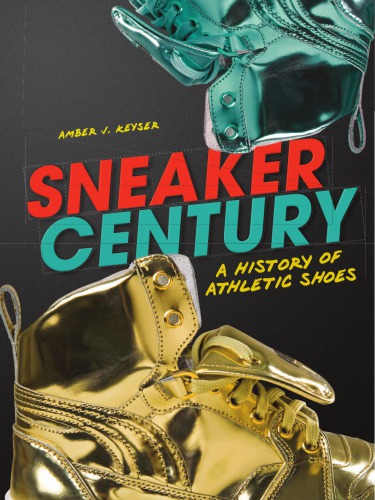
Sneaker Century
A History of Athletic Shoes
فرمت کتاب
ebook
تاریخ انتشار
2017
Lexile Score
1180
Reading Level
6
ATOS
7.6
Interest Level
4-8(MG)
نویسنده
Amber J. Keyserشابک
9781512456424
کتاب های مرتبط
- اطلاعات
- نقد و بررسی
- دیدگاه کاربران
نقد و بررسی

December 1, 2014
Gr 5 Up-Trainers. Tennies. Kicks. No matter what they're called, athletic shoes have played an important role in American culture and the global economy during the past century, and this insightful look at the history of sneakers traces the shoes, from their humble origins in the Industrial Revolution to their current status as part of a multibillion dollar industry. While the text acknowledges the crucial role shoes play in athletic performance-a fact of which most readers are likely well aware-it does not dwell upon it. Instead, Keyser peppers the narrative with lesser-known human interest stories, such as the sibling rivalry between shoe manufacturers Adi and Rudolf Dassler that spawned Adidas and Puma. Equally fascinating is Keyser's examination of the role youth culture has played in the athletic shoe industry (and vice versa) as well as her look at the seamier side of shoe manufacturing, including the extreme disparity between foreign labor costs and the price of the final product. While not comprehensive, the text provides readers with a solid understanding of sneaker culture. The graphics complement the text without overshadowing it, though there's a lot of white space on some pages. Readers of all stripes will appreciate the role sneakers play in our lives. A fun and informative addition.-Audrey Sumser, Cuyahoga County Public Library, Mayfield, OH
Copyright 2014 School Library Journal, LLC Used with permission.

October 15, 2014
A comprehensive look at the rise of sneakers in American culture. Exploring a narrow field that nevertheless yields plenty of interest, the author shines a light on several aspects of sneaker culture. Topics range from the footwear's early development in the early 19th century to its rise in popularity that coincides with the rise of the American teenager. The book's layout augments the text with colorful infographics and various small sidebars that, while not necessary to the historical narrative, are well worth highlighting on their own. Discussions of the shoe's rise to fame in the 1950s and resurgence in the 1980s (both thanks to popular figures like James Dean, Steve McQueen, Run-D.M.C. and Michael Jordan) are the best bits. A portion regarding Olympic runners and shady endorsement dealings makes for another amusing section. A discussion of the global economics of shoe manufacturing arrives a bit too late in the book to capture readers' interest, and it doesn't help that this section is much less elaborate than all those that came before it. Another lesser moment is a look back at the 1970s fad of "jogging," something no one wants to be reminded of. An illuminating and amusing look at a subject with much more history than one might expect. (Nonfiction. 12-16)
COPYRIGHT(2014) Kirkus Reviews, ALL RIGHTS RESERVED.

November 15, 2014
Grades 7-10 Today it's a given that shoes of a star athlete are a big deal. But how did we get there? Keyser offers an illuminating synthesis of history, science, commerce, and sports that shows why kicks are where it's at. It begins way, way back with moccasins5,500-year-old Armenian artifacts are the oldest known wrap-style shoes ever found. Fast-forward through the Romans, the popularization of rubber, and the creation of Chuck Taylors, and you end up at the era young readers will be interested in most: the dawn of Adidas, Puma, Nike, and others. Track shoes began the endorsement avalanche, but soon the jogging boom of the 1980s andof courseMichael Jordan solidified the shoe as the foremost object of athlete identity. The layout and photos are snappy, if a bit short on shots of, well, sneakers. Keyser, however, always does a standout job taking the high-interest topic and giving it depth, never skirting controversies (Nike's factories in China, the sneaker industry's alleged out-pricing the very kids who lend the shoes street cred, etc.). This will be popular.(Reprinted with permission of Booklist, copyright 2014, American Library Association.)

























دیدگاه کاربران